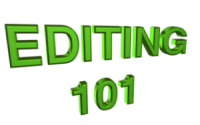 Sharing Content, Copyrights, and Permissions – Part 1
Sharing Content, Copyrights, and Permissions – Part 1
Good morning readers! Thanks for tuning in for another episode of “What Have You Done Wrong Recently?” brought to you by your host, Ape, and his sponsor, the Chicago Manual of Style.
So, in the past we’ve talked about using song lyrics in your manuscript (08), we’ve discussed brand names and trademark use (22), and we touched briefly on using quotes in your book in a two-part series (part one (48)) and (part two (49)), but that was mostly focused on tips for conducting research.
We haven’t really talked about copyright in terms of using other people’s content (what they wrote) in your book or on your blog.
Hold on a second…did you see that? ON YOUR BLOG. That’s right: using other people’s material on your blog.
Blogger G decides that he wants to write a post about using Pinterest to market your self-published book. Using his trusty Internet search engine, he finds a lovely snippet on a reputable website that lists three short tips for using Pinterest
Great! thinks Blogger G. That’s an excellent addition to my article.
He’s off and running, working his article around these three bullet points that…SOMEBODY ELSE WROTE. Yes, faithful readers, while many of you may think nothing of the tactic that is, in today’s world, called “repurposing content,” it’s a no-no from a legal standpoint because, you see, the original intent of repurposing content is to re-use your own content—not somebody else’s.
In the United States (and in most other countries), whatever you write belongs to you. And whatever Blogger X wrote belongs to her, and whatever Blogger P wrote belongs to him. That’s why there are all these little “©2015” notices at the bottom of web pages.
Copyrighted material should not be shared without the permission of the author. Especially not the entire article! Blogger G could probably get away with using these three bullet points (with or without crediting the original author) because they’re only a small part of the original article, but it’s bad manners. It’s polite to ask permission. After all, wouldn’t you love to receive an email from someone who wanted to quote YOU?
It’s not difficult to search a site and find out if their information is copyrighted or protected. When our original “repurposer,” Blogger G, reviews the page, yep, sure enough, at the top of the article is that author’s name: “5 Ways Pinterest Can Help Authors” By Karen Lotter on February 8, 2014. And at the bottom of the page—yes, waaay down at the bottom, past all the comments and in teeny-tiny print—it says, “© 2014 Self-Publishing Advice. The Alliance of Independent Authors’s Blog Contact: info@allianceindependentauthors.org.” Sometimes this copyright statement will also say, “All Rights Reserved,” which is an extra emphasis on “Hands off, buddy, this is my work!”
Note that even our friend the Ape’s CC notice here says, “Unauthorized use and/or duplication of this material without express and written permission from this blog’s owner AND article / image(s) used original owner is strictly prohibited. Excerpts and links may be used, provided that full and clear credit is given…”
We’ll talk about actually getting permission next week in Part 2.
 Susan
Susan

Reblogged this on Writing for the Whole Darn Universe.
LikeLiked by 2 people
Thanks, Malia Ann! I know the Whole Darn Universe would always be very careful of copyright. 😀
LikeLiked by 2 people
You’re welcome, Susan! And the Whole Darn Universe will definitely never copy anyone else’s rights. 🙂
LikeLiked by 1 person
Thanks for sharing, Malia Ann 😀
LikeLiked by 1 person
You’re welcome, Chris! 🙂
LikeLiked by 1 person
Another helpful post, Susan and Mr. Ape. 👍
LikeLiked by 2 people
Thanks, Tracy! But I’m giggling at “Mr. Ape.” 😀
LikeLiked by 2 people
Mr 🦍 ❤️
LikeLiked by 1 person
😀
LikeLiked by 1 person
Reblogged this on Art by Rob Goldstein and commented:
from Chris The Story Reading Ape’s Blog — Important information for bloggers
LikeLiked by 2 people
Thanks for sharing, Rob 😀
LikeLiked by 1 person
Thanks, Robert! 🙂
LikeLiked by 2 people
Thank you. This is important information. I find it a bit confusing because I see the same animated gif’s and memes on twitter and wordpress all the time. I’m diligent about checking usage agreements when I post an image or piece of music to my blog. I’ve recently begun to use animated gifs and memes, Are they a different kind of content, like shareware.
LikeLiked by 2 people
I have to admit that I don’t know what the “rules” are regarding memes and animated GIFs. 😦 However, since they were created deliberately to be shared, I don’t think any of them are copyrighted.
Images and music definitely need permission, so it’s great that you’re already doing that!
LikeLiked by 2 people
from what I hear, the general rule is if you don’t want it shared to share it on Twitter. I’ve certainly learned to upload lower resolution versions of my own images….but I don’t know if we can stop people from using images in different ways, or as you said it, re-purposing them.
LikeLiked by 2 people